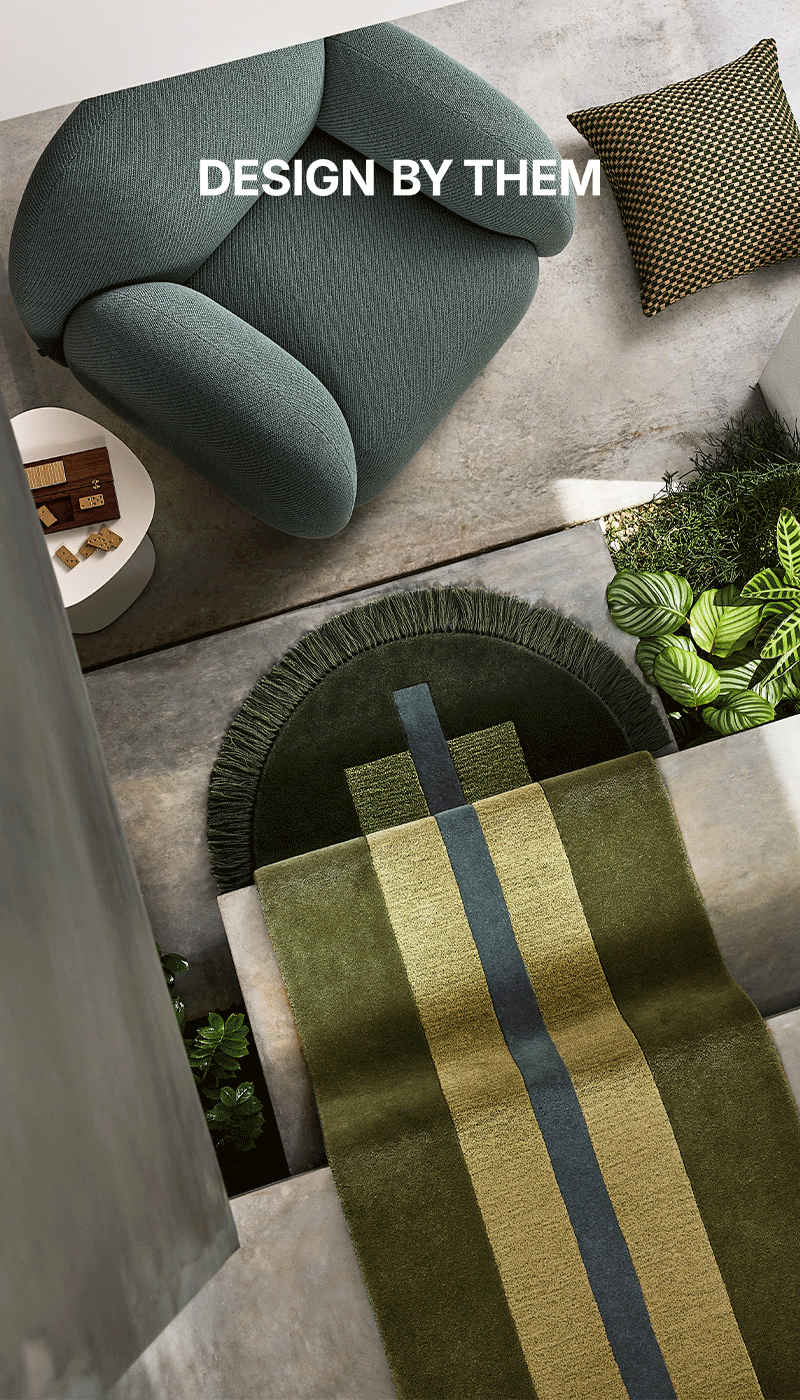Kate Bowman—From Waste To Wonder
Deeply rooted in sustainability and a connection to place, Kate Bowman transforms discarded materials into art—crafting pieces that narrate Tasmania's history and natural beauty.
Words HANDE RENSHAW Photos DEARNA BOND, MARTINA GEMMOLA & KATE BOWMAN
Coffee table collaboration—Kate Bowman + Christopher Blank. Photo: Martina Gemmola
Ceramicist and designer Kate Bowman in her nipaluna/Hobart studio with her Talus Table. Photo: Dearna Bond
‘[At the moment I’m particularly loving] tiles. There’s something so architectural and permanent about them—they hold history, they build spaces, they get lived with in a way that feels really grounding.’ Photo: Dearna Bond
‘It’s about finding beauty in the overlooked and turning history into something tactile.’ Photo: Kate Bowman
‘There’s a rhythm to it, a problem-solving element that keeps me engaged. And when something unexpected happens at high temperatures, it’s like discovering a new colour for the first time.’ Photo: Dearna Bond
“Tasmania forces you to slow down and pay attention—the landscape is wild, the materials are right at your feet, and there’s a deep respect for craft here.”
Kate Bowman’s Igne Pendant—Fleck is handcrafted from stoneware clay and basalt glaze, adorned with volcanic rock flecks. Photo: Dearna Bond
‘After running a pottery school for years, I became acutely aware of the industry’s waste. Not just in what gets thrown out, but in how materials are sourced.’ Photo: Kate Bowman
Among the sandstone cliffs and tidal estuaries in her new hometown of nipaluna/Hobart, ceramicist and designer Kate Bowman is redefining how she creates.
Kate’s ceramics aren’t just objects; they’re vessels embedded with memory, texture and geography. ‘I want my work to feel deeply connected to where it comes from—the textures, the weight, the imperfections of natural materials,’ she shares.
Recently moving from Melbourne’s Mornington Peninsula to Tasmania, the incredibly beautiful and wild location has had a major influence on the artist’s practice. ‘Tasmania forces you to slow down, and pay attention,’ Kate says.
Beyond the land, it's also the local community that’s made an impact, ‘There’s a tight-knit creative scene here, really supportive. Everyone is experimenting, pushing ideas forward.’
When Kate was just eleven years old, she would tag along to her mother’s Sunday pottery classes, held in an elderly Italian man’s shed. ‘He had a red brick kiln in his backyard that, looking back now, resembled a converted pizza oven,’ she says. This first glimpse inside, seeing the fired pieces glowing in the dim light, left her spellbound, ‘I was equally confused and mesmerised—since then I’ve always been drawn to alchemy of ceramics,’ Kate says.
Hobart, with its deep history and rich hospitality culture, provides the raw materials for Kate’s latest explorations. Instead of relying on commercial glazes, she now repurposes oyster shells, bones, and bottles from local restaurants, pairing them with rock waste from defunct brickworks and quarries. The result is an ongoing dialogue between the past and present, where discarded materials find a second life.
‘It's about finding beauty in the overlooked and turning history into something tactile,’ she explains. Kate’s process is one of excavation—both literal and conceptually—as she sifts through Tasmania’s industrial past and its geological foundations to create glazes and surfaces.
Kate’s current collection includes lighting, furniture and sculpture— yet it’s tiles that hold a particular allure for the artist. ‘There’s something so architectural and permanent about them. They hold history, they build spaces, they get lived with in a way that feels really grounding.’
It’s a sentiment that also informs her growing interest in volcanic rock as a material. A need to look beyond conventional ceramic methods led Kate to take a workshop with zero-waste glaze pioneer Claire Ellis, sending her down what she calls, ‘the rock rabbit hole’. Since then, basalt has become a staple in her work. ‘It creates these incredible volcanic flecks, and best of all, it’s everywhere—you can find it on the side of the road or out in the bush. It’s raw, abundant and full of character.’
For Kate, the deepest sense of purpose comes in the process itself—grinding materials, testing glazes, and experimenting with the unknown. ‘There’s a rhythm to it, a problem-solving element that keeps me engaged. And when something unexpected happens at high temperatures, it’s like discovering a new colour for the first time.’
Coming up for Kate is a group exhibition with Designed Objects Tasmania at Salamanca Arts Centre, showcasing her latest explorations, while a new collection of furniture pieces—an evolution of a coffee table first exhibited at Design Tasmania—promises to push her material experimentation even further.
To stay up to date with Kate’s work and exhibitions, visit her website or follow @katebowmanceramics on Instagram.










